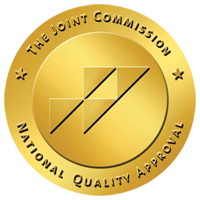There is no one path to recovery. Everyone will have a different journey, depending on their situation, experiences, and overall goal. Even so, the idea of “recovery” shouldn’t be thought of as a single event. Getting to “recovery” is actually a series of stages, each with its own set of challenges and milestones.
Knowing the different stages of recovery can be helpful for the individual as well as caregivers and loved ones to fully understand what to expect. Having this awareness can create a stronger foundation for success. Patients may feel more compelled to continue on having the awareness of what life can be in recovery. This path will ultimately build resilience and possibly lead to stronger grounds for living a lasting life of healing and sobriety.
Here are the five stages of recovery and what you can potentially expect on the journey.
Stage One: Precontemplation
In this initial phase, the individual may not fully understand the depths to which their lives have taken them. It’s common for them to downplay their substance or alcohol abuse, blaming it on life circumstances or unpredictable events. Because of this, they’ll likely not want to change their behavior regardless of what family or friends are telling them to do. They may either be resistant or feel entirely hopeless that life can get any better than this.
Denial is a common characteristic of the precontemplation stage. Even if everyone else in their circle can see that they have a problem, they may disregard these thoughts or minimize them. As a response, they may say things like “I’m fine” or “It’s really not that bad.” These phrases are signals that they aren’t fully aware of just how bad a situation they are in.
Navigating this phase can be tricky for friends and family. It’s easy for loved ones to get frustrated and annoyed by what they’re witnessing. While the first instinct may be to pressure a person into treatment, in reality, that could backfire. Instead, it’s best to build awareness around the situation and encourage self-reflection. As they start to be with their thoughts, make sure they are in a caring environment to reduce the likelihood of them getting severely hurt or injured.
Stage Two: Contemplation
In the second stage, the individual has acknowledged that they have a problem. They may not fully be aware of just how bad it is, but they have come to accept that it has gone too far. However, this doesn’t mean that they are ready to change. They may still be wavering between whether they can continue to manage their problem on their own or if they should fully commit to recovery.
Loved ones should actively listen to the patient to get a sense of what they are feeling and their current needs. This is also the phase where the individual may be open to reading information about treatment, although they likely won’t want to do any research on their own about inpatient rehab. Family and friends can be helpful by providing them with the information outright, but not pressuring them into any direction.
Stage Three: Preparation
This is the stage where arrangements start to be put into place. The individual goes from thinking about the problem to moving forward and planning a solution. They’ll begin evaluating their options, and may start making small changes to their habits. For instance, they may avoid hanging out with a certain friend group if they’re known for staying out late and going to the bar. Or they may sign up to see a therapist or counselor to get initial help.
Since this is a time for planning, family and friends can be supportive by helping the individual develop a concrete recovery plan. You may sit with them while they research inpatient treatment facilities, or provide moral support while they write out their list of life goals. If you notice any triggers within the house, you may discuss removing them together to get rid of the addictive behaviors.
Stage Four: Action
Execution starts during this fourth stage. They’ll start meeting with the therapist regularly and developing a trusted relationship. They’ll go to support groups, such as Alcoholics Anonymous or Narcotics Anonymous. If appropriate, they may begin with a full detox and begin taking medication. They’ll implement new habits and routines into their day-to-day life to support themselves during this phase.
This action stage can be of varying length depending on the types of treatment that are needed. Typically, it begins with a formal treatment of 30 to 90 days, followed by an individual action plan that can last anywhere from several months to several years.
This is where the hard work finally begins. While it may feel like relief, know that your loved one is just getting started on their journey. They’ll need more support than ever to continue down this hard road. While you may begin to notice immediate change, it may be harder for them to identify it on their own. They’re grieving what life once was and trying to figure out who they will become.
Stage Five: Maintenance
This final stage is all about sustaining the progress and changes that were made. Just because someone is in “maintenance” mode doesn’t mean that they are healed. They’ll need to make daily decisions to continue down their path of recovery. It requires ongoing effort and continued participation in support groups to reinforce these new lifestyle behaviors.
Individuals and their loved ones need to plan for setbacks. Someone may feel triggered watching family members pass bottle after bottle of wine around the table during a holiday meal. Acknowledging the long-term goal and accepting that their new life is better than their old life will make a world of difference in lasting recovery.


